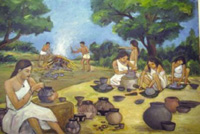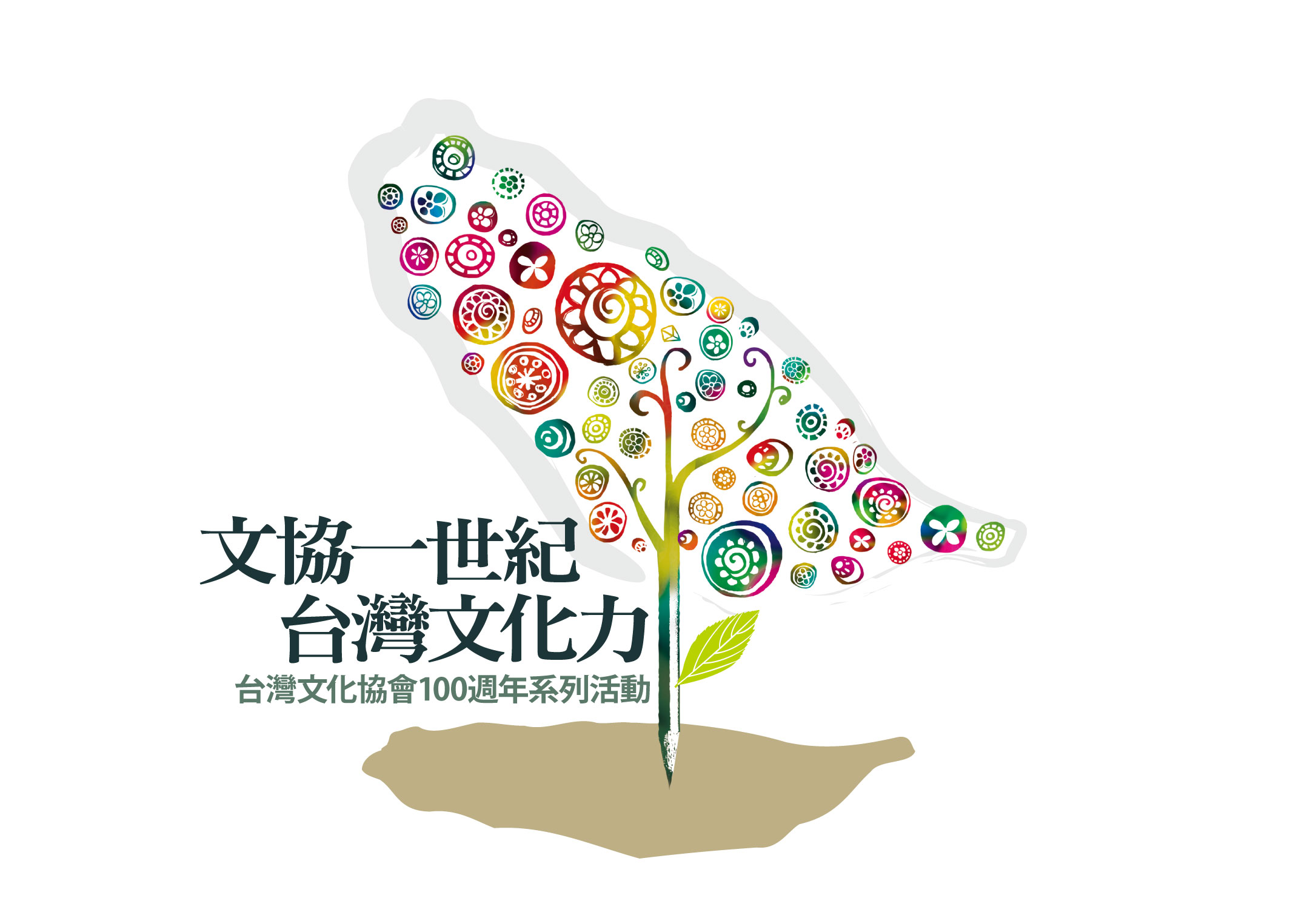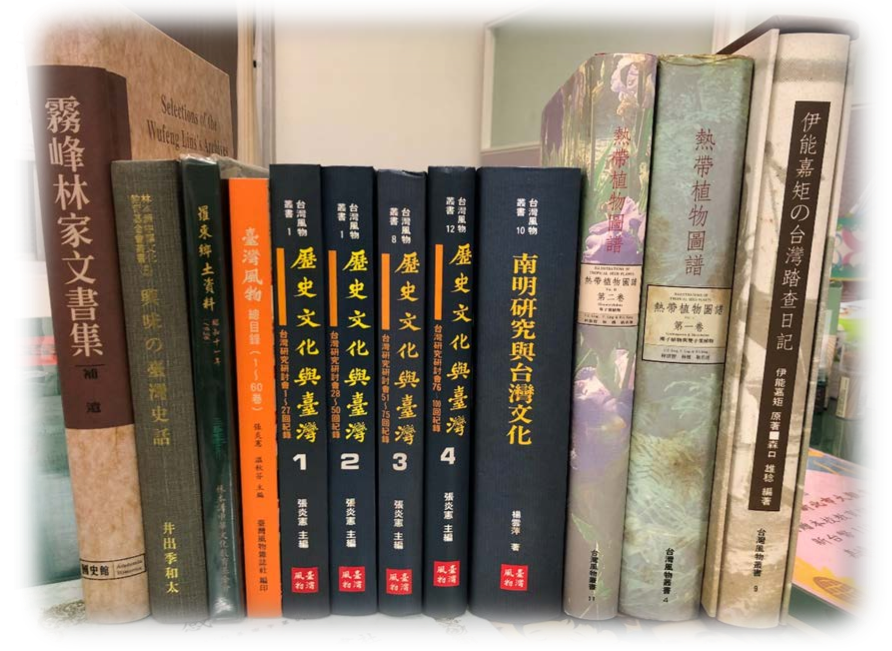
台灣的史前文化
Taiwan’s prehistoric culture
劉益昌/Yi-chang Liu
(中央研究院歷史語言研究所研究員/Research Fellow at the Institute of History and Philology, Academia Sinica)
2001-03-19  One of the most important parts of anarchaeologist’s work is toreconstruct the life of prehistoricpeoples
One of the most important parts of anarchaeologist’s work is toreconstruct the life of prehistoricpeoples
雖然長期以來台灣人對於本土過去歷史的瞭解有著嚴重的偏頗,但卻無法完全抹煞過去人群在台灣活動的事實。考古學者告訴我們,台灣當然不僅只有四百年的歷史,而是有更長的時間深度,原來就有長期居住的史前時代族群。近年來的研究成果,更把人類活動的時間深度延伸到更久遠的更新世冰河時代,也就是史前時代的早期階段。台灣地區從日治初年以來,長達百年以上科學的考古工作,發現大量保存於地層中的考古遺址,透過考古調查發掘及研究,記錄了過去人類存在的事實,並初步建構史前時期人類文化發展歷程;從1980年代以來幾次大規模的考古發現與發掘工作,都使得我們重新思考台灣早期人類活動的過程與變遷,也讓我們重新思考台灣人的定義。因此本週請中央研究院歷史語言研究所研究員劉益昌博士談談台灣的史前文化狀況。
Although for a long time now, the people ofTaiwan have had a biased understanding of thehistory of this land, it has not been possibleto completely eliminate the fact of activitiesin Taiwan by people in the past. Archaeologiststell us that Taiwan obviously has far longerthan just 400 years of history, because therewere originally long-established prehistoricpeoples, and research in recent years hasextended the time-span of human activity backeven further to the Pleistocene ice age, thatis, the early stages of prehistory. Over acentury of scientific archaeological work inTaiwan, starting in the early days of theJapanese occupation, has uncovered a largenumber of archaeological sites preserved in thestrata of the earth, and through archaeologicalinvestigation, excavation and research, we haverecorded the facts of past human existence, andlaid the groundwork for the course ofprehistoric human cultural development. Sincethe 1980s, several large-scale archaeologicaldiscoveries and excavations have made us re-thinkthe process and transition of the activities ofTaiwan’s early inhabitants, and the verydefinition of “Taiwanese people.” This week,Taiwan News has invited Yi-chang Liu, researchfellow at Academia Sinica’s Institute of Historyand Philology, to tell us about Taiwan’sprehistoric culture.
已記錄將近二千個遺址
台灣地區自西元1896年發見第一個史前這片土地上記錄了將近二千個遺址。分佈的範圍幾乎遍及台灣本島及澎湖群島、綠島、蘭嶼、小琉球等附屬島嶼。垂直高度的分佈則從海平面附近數公尺起的海岸平原,到高達2950公尺左右的山地,比民族誌記載的原住民族最高的聚落還高。這些遺址的長期研究工作,已經初步建立了一個史前文化發展的大架構及其演變體系,也可以說明一部份史前文化與當代原住民族之間的關係。
Almost 2,000 sites already recorded
Taiwan’s first prehistoric site was discovered in1896, and since the uncovering of the Chihshanyensite, archaeologists have recorded almost 2000different sites. The geographical range coveredincludes nearly all of the island of Taiwan, andthe surrounding islands, including the Penghu(Pescadores) group of islands, Green Island,Orchid Island and Hsiao Liuchiu. Vertically,distribution ranges from coastal plains a fewmeters above sea-level to mountains at a height ofabout 2,950 meters, which is higher than thehighest Aboriginal villages in ethnographic record.Long-term research work on these sites has alreadypreliminarily established a framework forprehistoric cultural development and itsevolutionary system, and can explain therelationship between part of prehistoric cultureand contemporary Aboriginal tribes.
劃分了許多不同的考古文化單位
目前台灣地區史前時代的人類所遺留的文化,依時間的早晚,分佈區域的不同和文化相貌的差異可以分為許多不同的考古文化單位,由於不知道這些文化擁有者人群的名稱,考古學者以具有代表性的遺址來稱呼他們。由早期到晚期可以大致分為:1.舊石器時代:包括長濱文化、網形文化、左鎮人。2.新石器時代早期:以大坌坑文化為代表。3.新石器時代中期:以訊塘埔文化、牛罵頭文化、牛稠子文化、「東部繩紋紅陶文化」為代表。4.新石器時代晚期:以芝山巖文化、圓山文化、丸山文化、營埔文化、大馬璘文化、大湖文化、鳳鼻頭文化、卑南文化、花岡山文化、麒麟文化為代表。5.金屬器與金石並用時代:以十三行文化、二本松文化、番仔園文化、大邱園文化、崁頂(貓兒干)文化、蔦松文化、北葉文化、龜山文化、靜浦文化、Lobusbussan文化為代表。
Many different archaeological culture subsections
The culture left behind by prehistoric people inTaiwan can be divided into many differentarchaeological cultural subsections accordingto how early or late they are on thetime-scale, geographical distribution anddifferences in cultural features. Since wedon’t know the names of the groups of peoplewho had these cultures, archaeologists name themafter the sites which represent their culture.From earliest to latest, we can make theseapproximate divisions: 1. Paleolithic Period,including Changpin Culture, Wanghsing Culture,Tsuo Chen Man 2. Early Neolithic Period,represented by Tapenkeng Culture 3. Mid NeolithicPeriod, represented by Hsuntangpu Culture, theNiumatou Culture, the Niuchoutzu Culture, the”Eastern Rope-Pattern Terracotta Culture” 4.Late Neolithic Period, represented by ChihshanyenCulture, Yuanshan Culture, Wanshan Culture,Yingpu Culture, Tamalin Culture, Tahu Culture,Fengpitou Culture, Peinan Culture, HuakangshanCulture and Chilin Culture 5. The age of metaland metal-and-stone tools: represented by ShihSan Hang Culture, Erhpensung Culture, PantsaiyuenCulture, Tachiuyuen Culture, Kanting (Maoerhkan)Culture, Niaosung Culture, Peiyeh Culture,Kueishan Culture, Chingpu Culture and LobusbussanCulture
在臺南縣所發現的左鎮人
左鎮人出土於臺南縣左鎮鄉菜寮溪河床,這個地區是臺灣本島相當重要的更新世化石產地,也是當時唯一出現化石人類的地點,不過最近高雄縣大崗山區也發現了人類的化石。左鎮人的化石標本包含來自不同個體的人類頂骨殘片及大臼齒。經鑑定屬於更新世晚期的早期智人,其絕對年代可能在距今二萬到三萬年之間,也就是更新世冰河時代的最後一次冰河時期。目前並未發現左鎮人使用的工具,學者推測他們也許是長濱文化的主人,不過從生活型態而言,更接近住在丘陵台地地區的網形文化人。
Tsuo Chen Man, discovered in Tainan County
Tsuo Chen Man was excavated from the riverbedin the Tsai Liao River in Tsuo Chen Township,Tainan County. This area is a fairly importantPleistocene-era fossil site on the main islandof Taiwan, and it was also the only place wherefossilized human remains have been found, untilthe fossilized remains of a human being werefound recently in Kaohsiung County’s Takangshanregion. Samples from the fossilized remains ofTsuo Chen Man contain parietal bone fragmentsand molars from different bodies. Having beenidentified as an early Homo sapiens from thelate Pleistocene era, his precise date can be fixedbetween 20,000 and 30,000 years ago, which is thelast ice age of the Pleistocene ice age era. Thetools used by the Tsuo Chen people have not yet beendiscovered, and scholars infer that they wereperhaps the masters of the Changpin Culture. However,in their lifestyle, they were closer to theWanghsing people living in the hilly terrace areas.
大坌坑文化為新石器時代的代表
從冰河時代最晚期氣候變暖以後,全世界分別從幾個適合農業的地區,發展了初期的農業,因而走進了新石器時代。在鄰近臺灣的長江中下游發展稻米種植,華南與東南亞發展根莖類作物種植,台灣是否也有農業初起的發展,目前還不明朗。不過在6500年前左右,北部的淡水河口附近和西南部當時還是沿海地帶的新化丘陵、鳳山丘陵,卻出現了帶有農業,使用陶器、磨製石器的新石器時代人群--大坌坑文化人。
Tapenkeng Culture represents the Neolithic era
Since the climate got warmer at the end of theice age, the whole world has developed early-stageagriculture in several regions suited to agriculturerespectively, with the consequence that mankindentered the Neolithic period. Not far from Taiwan,in the middle and lower reaches of the Yangtze River,people developed rice cultivation. In South Chinaand Southeast Asia, rhizome crop cultivation wasdeveloped. Whether or not Taiwan had starteddeveloping agriculture is not yet known. However,around 6500 years ago, around Tamshui River in thenorth, and in the region of the Hsinhua andFengshan hills which were at that time along thecoast in the southwest of Taiwan, a group ofNeolithic people who brought with them agriculture,the use of pottery and ground stone utensilsappear – the Tapenkeng Culture people.
形成地區性網絡
從距今四千五百年前新石器中期開始,臺灣地區的人群已經學會種植稻子、小米等穀類作物,加上原來的根莖類作物,農業已經多樣化。石斧、石鋤等砍伐森林、翻耕土地的工具之外,加上石刀、石鐮等收穫工具,使得農業更有效率,土地贍養力增加,單位面積可養活的人口大增,因而逐漸降低狩獵、捕魚、採集等的重要性。定居時間長久,以及平原地區聚落大型化的趨勢越來越明顯。聚落中有閒階級增加,宗教、藝術等非生產行為在日常生活中的比重增多,聚落間的交換或貿易逐漸形成地區性網絡。
The formation of regional networks
Starting from the mid-Neolithic period, 4500years ago, people in Taiwan already knew howto cultivate rice, millet and other graincrops, in addition to rhizome crops, soagriculture was already diversifying. Apartfrom stone tools such as axes and hoes whichwere used to clear forest, turn and plow theland, there were also stone knives and stonesickles used for harvesting, which madeagriculture more efficient, and increased landmaintenance ability and the number of mouthsthat a unit of land could feed. Consequently,the importance of hunting, fishing and gatheringgradually waned. The period of settling downgrew longer, and a clear trend emerged forsettlements on the plain to become larger. Theleisured classes in these settlements grew, theweight of non-productive activities such asreligion and art increased, and regional networksfor exchange and trade gradually emerged betweensettlements.

Jade ornaments in the shape ofpeople and animals, found allover Taiwan.
玉器的製造與交換
這樣的狀態,經過一千年的發展,到了四千年前左右或稍早,可能由於人口增加這項因素,使得人群逐漸向河流中游與山區移動,目的似乎在尋找更多可利用的土地與生態區位,使得土地利用的範圍擴張到河流中遊山區的台地和山坡地。當然從各種工具的複雜度,也看出土地利用型態的改變,尤其是農業生產型態多樣,生產力增加,食物無於匱乏,伴隨而來的各種宗教儀式與藝術型態出現於當時社會中。交換、貿易依舊盛行聚落與人群之間,這個階段最具代表性的是玉器的製造與交換,交換的關係網絡幾乎遍及全台各地,連澎湖也不例外。最有名的例子是,台東卑南遺址、宜蘭丸山遺址、台北芝山巖遺址與屏東 Chula遺址出現了造型相似,製造方法相同,具有水平風格的人獸型玉玦。同時人群之間也因為不明的原因,而出現了獵頭等小型戰爭行為。
The manufacture and exchange of jade objects
This situation developed for a thousand years,and when we get to about 4,000 years ago,maybe slightly earlier, perhaps due topopulation increase, people gradually moveupstream to the middle courses of the riversand into the mountains. The aim seems tohave been the search for more usable land andniches, and this move expanded the range ofland use to the middle courses of the riversand to the mountain terraces and slopes. Ofcourse, from the complexity of all the tools,we can see that land use has changed,particularly in the diversification ofagricultural production methods, the increasein productivity, food supplies didn’t runshort, and in the wake of this, all kinds ofreligious rituals and artistic forms emergedin contemporary society. Exchange and tradecontinued to flourish between settlements andgroups of people, and the manufacture andexchange of jade objects is most representativeof this period. The exchange relationshipnetwork covered most of Taiwan, and reached eventhe Penghu islands. The most famous examplesare the Peinan site in Taitung, and Wanshansite in Ilan, the Chihshanyen site in Taipei andthe Chula site in Pingtung. These jade ornamentsin the shapes of people and animals are allsimilar in shape and method of manufacture, andhorizontal in style. For reasons which areunclear, head-hunting and other small-scalewar-like behaviors emerge between differentgroups of people at this time.
奠定臺灣原住民的複雜文化形貌
從3500年前左右人類開始擴張生活領域以來,逐漸適應並擴張至不同生態區位所發展的多元文化型態,也因為臺灣山地地區及河流等地形阻隔,使得每一個塊狀區域逐漸形成地區性文化,進而轉變成為具有獨特發展型態的文化單元,今日所見臺灣原住民的複雜文化形貌,似乎奠基於這個階段。
Establishing the complex cultures of theAboriginals of Taiwan
Around 3500 years ago, people started to expandtheir living domain, and gradually adapted andexpanded the diverse cultural forms which wereproduced by living in different environments.Also, because the mountain and river regions ofTaiwan were disconnected, this graduallybrought about the emergence of regionalcultures, and these then became cultural unitswith their own unique developments. The complexcultural manifestations of the Aboriginals seenin Taiwan today seem to have been establishedin this stage.
以煉鐵著名的十三行遺址
距今1800年前左右,臺灣地區也伴隨東南亞地區青銅器、鐵器文化的興起,而局部走入製造及使用鐵器、青銅器、金器為主的金屬器時代,最有名的煉鐵遺址就是淡水河口南岸的十三行遺址,以十三行遺址為代表的十三行文化這群人廣泛分佈於淡水河口至花蓮北側奇萊平原之間的海岸地帶。
The Shih San Hang site, famous for iron smelting
Around 1800 years ago, Taiwan developed bronzeand iron tool culture, along with the generalSoutheast Asia region, but locally, the Bronzeand Iron Ages were represented in this cultureby moving towards manufacturing and using iron,bronze and gold wares. Most famous is the ShihSan Hang site on the south bank of the mouth ofthe Tamshui River where remnants of ironsmelting were found. The people of the Shih SanHang Culture represented by the Shih San Hangsite were distributed along the coastal regionbetween the mouth of the Tamshui to the Chilaiplain north of Hualien.
適應與擴張
金屬器除了做為農具、獵具和日常工具使用之外,銅器、金器有相當大的比例是用於儀式性或裝飾用品上。取得金屬製品不易的山地地區,仍然大量使用粗製的打製石斧、石鋤從事農業耕作,生產型態和新石器晚期差異不大,只是山區聚落範圍更擴張到河流上游的高山地帶,海拔二千公尺以上甚至接近三千公尺地區,利用了山區更廣泛的資源。平原地區族群則對於海岸平原與潮間帶資源的利用更為精密,西南平原的大型園藝式聚落興起,中、北部則以海岸中小型聚落為多。除了區域自然資源的精密利用之外,北部的十三行文化人更利用煉製出的鐵器、銅器做為交換的物資,進行北部與東部、中部之間的交換貿易活動,同時擴張交換貿易的範圍到亞洲大陸南部、中南半島、菲律賓、琉球等海外地區,將資源利用的範圍擴張到本島以外的地區。
Adaptation and expansion
Apart from metal equipment for agriculture,hunting and daily use, a large proportion ofmetalware made from copper and gold were forritual or ornamental use. It was not easy toobtain metalware in the mountain regions, andmany roughly-hewn stone axes and hoes werestill used for agriculture and cultivation.There was not a great difference between thisage and the later Neolithic period in productionmethods, but the range of mountain settlementsexpanded to high mountain regions in the upperreaches of the rivers, at an elevation of over2000 meters, even 3000 meters above sea level,and these people used the more extensiveresources of the mountain regions. The peoplesof the plains made ever more precise use of theresources of the coastal plains and tideland,and in the plains of the southwest, large-scalegarden-style settlements flourished, while inthe central and northern regions, coastal smalland medium-sized settlements were more common.Apart from the precise use of regional naturalresources, the Shih San Han Culture people inthe north made more use of ironware andbronzeware produced by smelting as goods forexchanging, and carried out trading activitiesbetween the north, east and central regions ofTaiwan. At the same time, the scope of exchangeand trade expanded to the southern regions ofthe Asian mainland, Indochina, the Philippines,the Ryuku islands and other regions, and therange of resources that were used expanded toinclude resources from outside Taiwan itself.
Edited by Hsu, Shiou-Iuan/ translated by Elizabeth Hoile
(許琇媛編輯/何麗薩翻譯)









